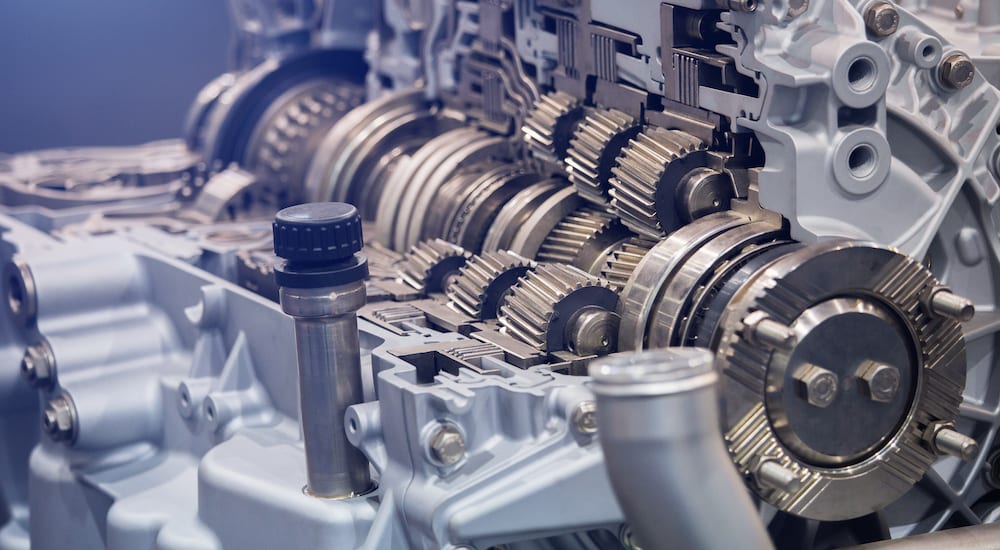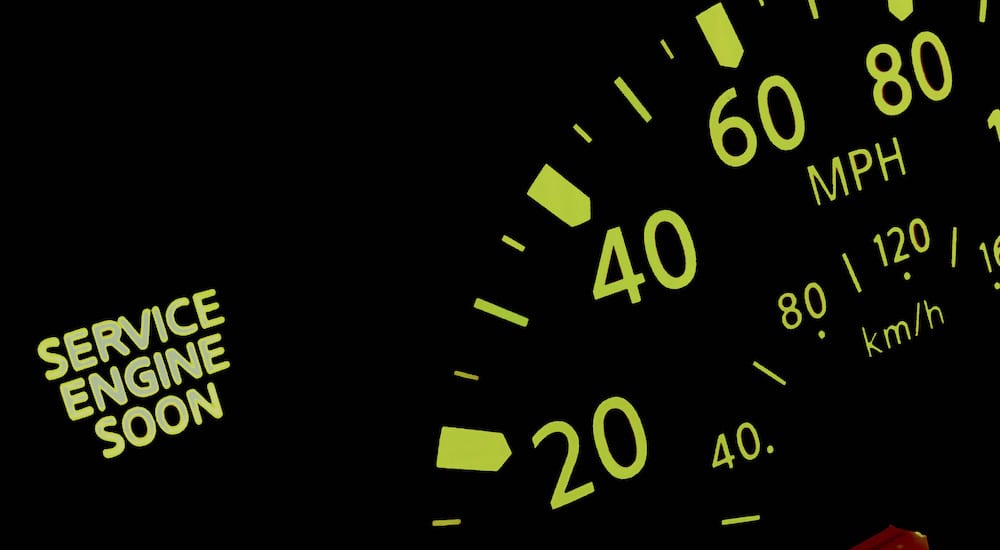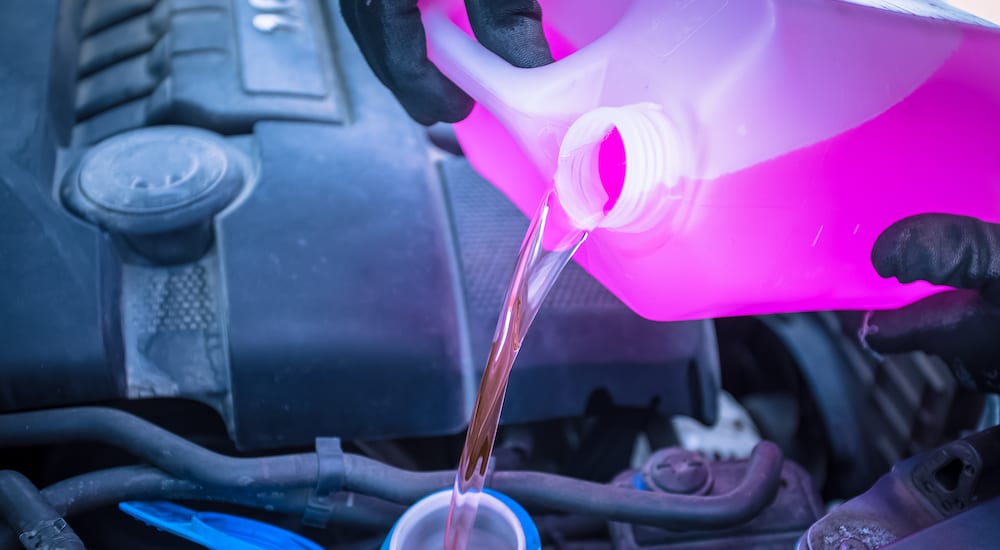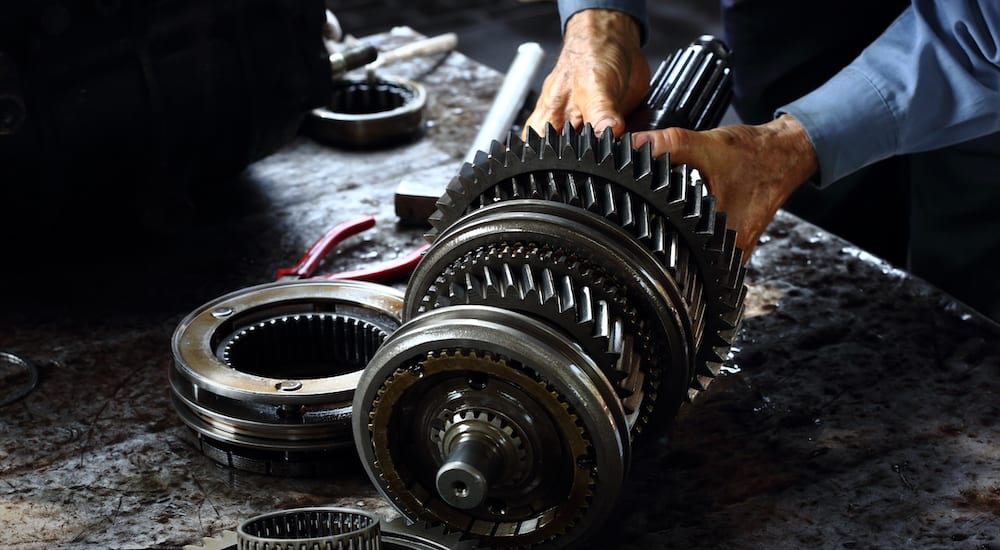Transmissions don’t just break down over night, they slowly degrade mile after mile. So if you hear something odd coming from your transmission one morning, chances are it’s because you neglected the health of your transmission. Transmission repair or replacement can be a very costly expense, thousands of dollars of expenses to be honest.
Taking care of a transmission isn’t hard, it’s certainly much easier than taking care of a puppy (or a child if you aren’t a dog person). So there is no excuse for your transmission to go through pain and suffering under your ownership. “But I don’t even know what a transmission is! Or what to do with one!” Don’t worry, that’s why this guide is here.
What is That… Thing?
The transmission is one of the most important pieces in your car. It’s what transfers the power from your engine to your wheels, making your car move. There are two types of transmissions, manual and automatic. An automatic transmission has a computer that tells your car the optimal time to shift up or down. Whereas a manual transmission is controlled by you via stick-shift, and you tell it when to shift up or down.
Now that you know what it does on a basic level, it’s time to look at some signs that indicate a problem.
Troubling Signs
A transmission is supposed to be virtually silent, all you should hear is a slight shifting sound as it goes up or down gears. That makes these signs easy to spot, but also easy to ignore.The most obvious sign being your check engine light. I know, I curse it too when it comes on. But, it’s there for a reason, and that reason could be your transmission. Other signs may include shaking, clanking, banging, vibrating, grinding, or any other verbs you can think of. If you hear or feel something, chances are you got a problem. Other signs could be smelling something burnt, a delay in shifting from gear to gear, or a slip in gears while you are driving.
These are all pretty obvious if you are paying attention while driving, and if you ignore them the results can be costly and devastating. Transmission repair can cost close to $3,000 if you take it to a garage to get repaired, more or less depending on the car. If you want to replace it yourself it can be a little cheaper, but it’s difficult to do without the proper equipment. Keeping your transmission healthy is very easy, and below are some ways you can do that.
Your Transmission is a Temple
First thing you need to do is find out the type of fluid your transmission takes. There are many types of transmission fluids, and you need to put the right one in your transmission. There is a lot of friction (therefore heat) inside the transmission, and the fluid is what keeps it running smooth and cool. The different types of fluids have different densities and heat-tolerances. Therefore, if you pair the fluid with the wrong transmission it can cause some serious problems.
Check Your Fluid
That being said, the number one way to prevent your transmission from having a premature burial at the junkyard is to check your fluid. Check your transmission fluid once a month at the very least, preferably twice. Make sure the fluid is a pink color and doesn’t smell burnt. If it is a reddish color or smells burnt, you need to have your transmission looked at. This could mean there is a problem with the transmission itself. Or, your fluid might need to be flushed because it has gotten too old.
Changing Your Fluid
Typically, flushing out the old ATF and replacing it with new fluid will prolong the life of your transmission. This is only if the fluid is changed fairly regularly though, about every 15,000 miles or at least once a year. However, if you are driving a car with over 100,000 miles flushing the fluid might actually hurt the vehicle. If this is the case, don’t flush it. Just check your fluid level and top it off regularly as needed. The reason being the new ATF has detergents in it that could clean out the built-up grime inside the transmission. Generally a good thing, but if you have a well-used transmission it is used to that grime and works well with it in there. Taking that away could cause problems within a few thousand miles of flushing the transmission, particularly slipping gears.
Do Not Over-fill Your Transmission!
Running a transmission with little to no fluid is a good way to damage it, but over-filling it is just as bad. Over-filling the transmission assembly can cause a multitude of problems. the gears could “whip” the fluid and turn it into a foam, causing a loss in pressure. The pressure provided by that fluid is required to run certain mechanisms in the transmission. Because some of it has turned into a foam-like substance, the fluid can no longer properly keep the transmission cool and it might heat up enough to damage itself. Too much fluid can even put pressure on the gaskets, causing a fluid leak.
Generally, it won’t take that much ATF to top off your transmission between the “add” and “full” marks. Check the dipstick frequently to ensure that you don’t over-fill it.
Stop Completely
Don’t slush-shift, that is a great way to keep your transmission healthy. What I mean by slush-shifting is going from gear to gear without fully stopping. Make sure to always come to a complete stop before changing gears. If you don’t, you can actually destroy (not just damage) the gears in your transmission.
Another way to help is putting your car in park at a long traffic light or while stuck in traffic. This may not make a difference to you because you are sitting there anyway, but your transmission will enjoy the break.
You have an e-brake for a reason, so use it. If you are parked on any type of incline use your emergency brake to help take stress off the gears. It’s safer to let the e-brake keep you parked on a hill anyway, rather than relying on transmission gears.
Let Your Car Warm Up
This is almost as important as regularly checking your transmission fluid. Most athletes don’t perform well in cold climates unless they have been conditioned for it, same goes for your car. If you don’t let your car warm up before you go somewhere, it’s the equivalent of you rolling out of a warm bed and having to run a marathon without a warm-up. I guarantee you aren’t going to perform well and will probably pull a muscle.
The fluids inside your vehicle thicken at colder temperatures. The transmission fluid will have a hard time reaching the transmission at first, so don’t just hop in and drive it. If you do, chances are you will damage the transmission because it will not have had a chance to get any fluid yet. Just let it idle for a few minutes, that’s all you need.
Simple Enough
Maintaining a healthy transmission is simple enough, so there is no reason to neglect it. Check your fluid and top it off if necessary, don’t overfill it, stop completely between shifting gears, and let your car warm up. These simple steps will pay-off in the long run and keep you out of the garage and on the road, where you and your car are both at your happiest.







